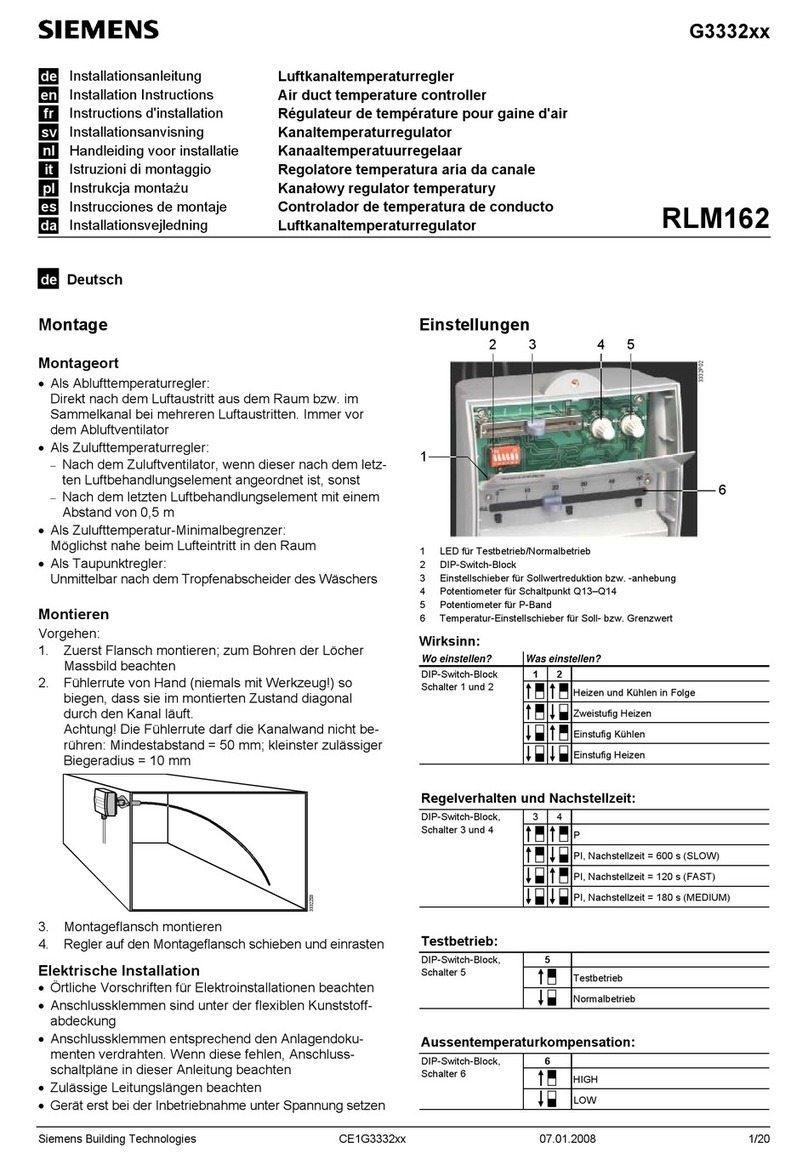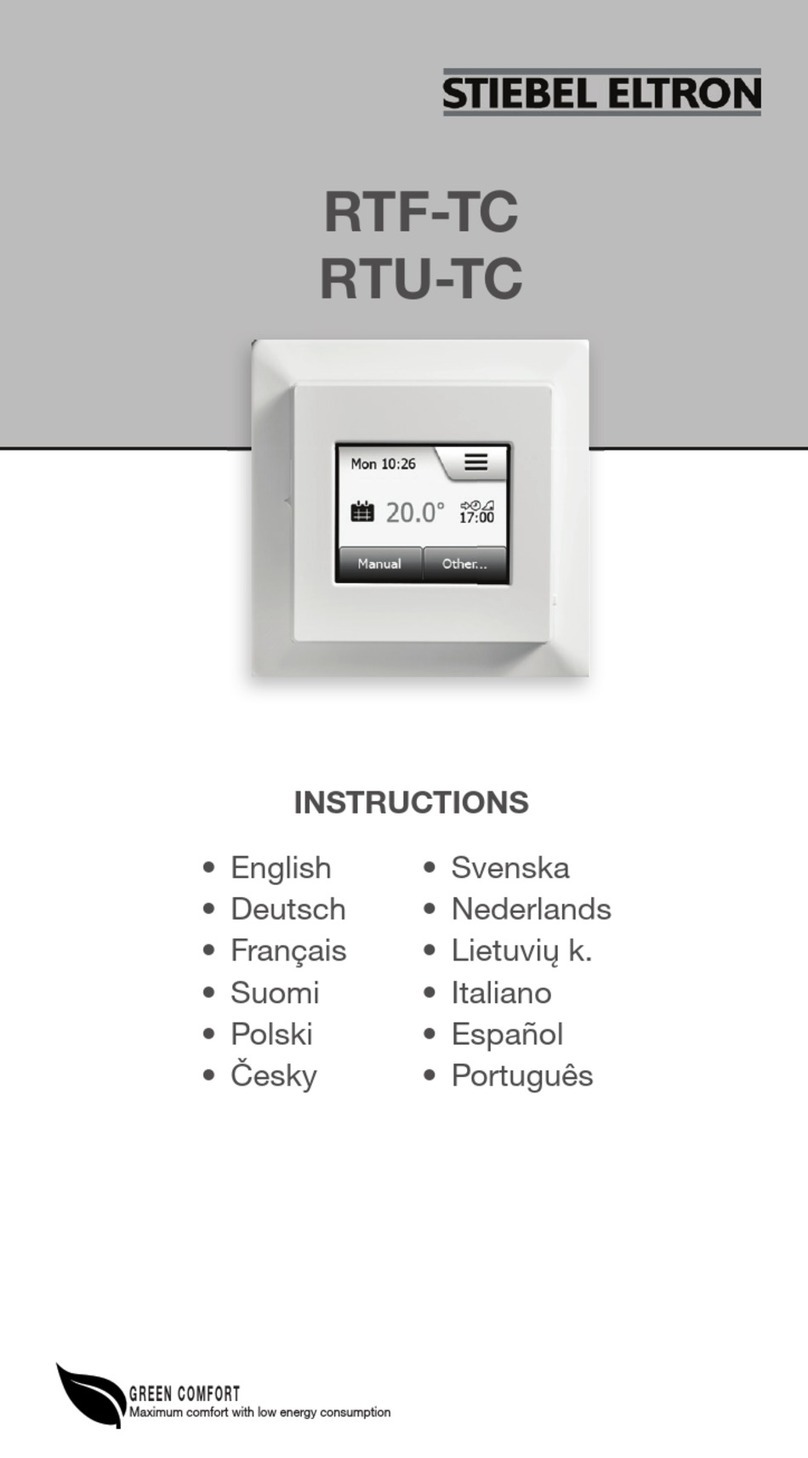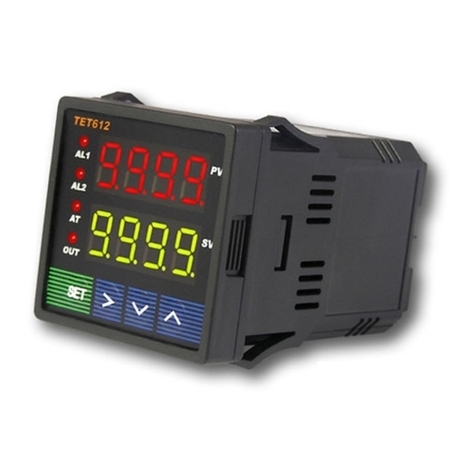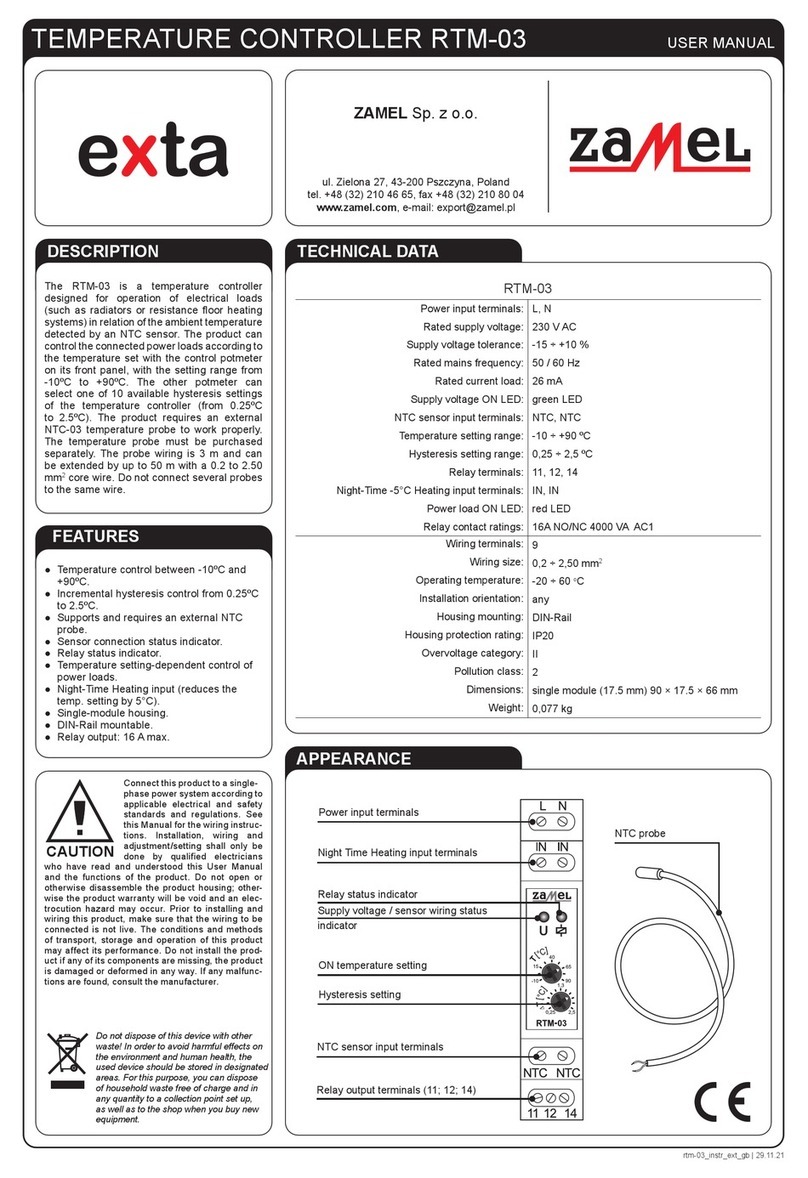Golander GL102B User manual

GL102B USER’S GUIDE GOLANDERUSA.COM
GL102B Intelligent Temperature Controller
User’s Guide
1Caution
Abnormal operating conditions can lead to one or more undesirable events that, in turn, could lead to injury
to personnel or damage to the equipment or other property. Do not touch the AC terminals while the power
is supplied to the controller to prevent an electric shock. Make sure power is disconnected while checking
the unit inside. To minimize the risk of potential safety problems, you should follow all applicable local and
national codes that regulate the installation and operation of your equipment.
2Features
•Compact size, only 48x48x75mm.
•RTD input (PT100, CU50) or Thermocouple input (T, R, J, B, S, K, E, WRe3-WRe25).
•Display the temperature in Celsius or Fahrenheit.
•Universal controller to work with either SSR or mechanical relay.
•Set control mode to PID or on/off, for either SSR or mechanical relay.
•When set the main control to SSR output, the internal relay J1, J2 can be set for alarm. When set
the main control to J2 relay, then J1 relay can be set for alarm.
3Specifications
•Power supply: 9-30V DC
•J1 relay contact capacity: AC250V/3A.
•Relay contact life: 1x105.
•SSR control signal: 12V (open-circuit voltage), 30mA (short-circuit current).
•Temperature accuracy: 0.2%FS.
•Dimensions: 48x48x75mm.
•Mounting panel cutout: 45x45mm
1

GL102B USER’S GUIDE GOLANDERUSA.COM
4Back terminals
8 9 10
1 2 34 5
7
6
-
+
SSR -
+
J1 Relay
9-30V DC
Thermocouple
RTD
11
12
13
14
J2 Relay
+ -
Figure 1 Back Terminals Wiring Diagram
4.1 Sensor connection
The default setting for the input type is for K type thermocouple, for different probe type, the parameter Inty
in Table 1.
For thermocouple, connect the positive wire to terminal 9 and the negative wire to terminal 10. For K type
thermocouple, if the wires are red and yellow, the yellow wire is positive. If they are red and other color
(blue, white, green….), the red is positive. If the polarity is reversed, when the temperature goes higher, the
readout will decrease.
For three-wire PT100 probe, if the wire color code is red, red and white (to IEC60751), connect the two red
wires to terminals 9 and 10 respectively, and connect the white wire to terminal 8. For two-wire PT100
probe, connect one wire to terminal 8 and connect the other wire to terminal 9, and short the terminals 9
and 10. The parameter Inty need to be changed to P10.0 (for 0.1 degree display resolution) or P100 (for 1
degree display resolution).
4.2 SSR connection
When the main control output is set to SSR (Outy in Table 1is set to 2 or 3), the SSR output is enabled.
The terminal 6 should be connected to the positive pole of the DC control side of the SSR, the terminal 7
should go to the negative pole of the SSR. When there is no SSR connected to the terminals 6 and 7, there
should be around 8V DC between them when the OUT indicator is on.
4.3 J1, J2 relay connection
J2 relay can be set to PID or on/off control output, or set as an alarm relay (see Outy in Table 1). J1 is for
alarm only. Please note the relays are just a switch, there is no power on them. The power need to be
provided to the load connected to the relays.
2

GL102B USER’S GUIDE GOLANDERUSA.COM
4.4 Power to the controller
The controller can be powered by 9-30V DC. Terminal 1 is for positive, terminal 2 is for negative. The
ground power line is not necessary.
5Front Panel
75
8
.
0
0
6
7
1
5 4 3 2
Figure 2 Front Panel
1 – Indicators
AL1: relay J1 output indicator. On when J1 relay closed
AL2: relay J2 output indicator. On when J2 relay closed
AT: Auto tune indicator. Flashing during auto tune. On when
in Manual Control Mode
OUT: SSR control output indicator.
2 – Up key, select next parameter or increase value
3 – Down key, select previous parameter or decrease value
4 – Shift Key, Shift the digit when changing the setting, or press and hold
the key to start auto tune
5 – SET key, parameter set/confirm
6 – PV, measured value display
7 – SV, target temperature display
6Initial function parameters (input passcode 0089 after pressing the SET key)
Table 1
Symbol
Name
Description
Range
Factory Value
Mark
INTY
Inty
Input type
See Table 2
K
Note 1
OUTY
Outy
Control output type
0, 1, 2, 3, 4
2
Note 2
HY
Hy
Hysteresis Band
0~9999
3
Note 3
PSB
Psb
Display temperature offset
-100~100 (degrees)
0
Note 4
RD
rd
Control action type
0: heat; 1: cool
0
CORF
CorF
Display Unit selection
0: ° C; 1: ° F
1
END
END
Exit
3

GL102B USER’S GUIDE GOLANDERUSA.COM
To access the 0089 menu, press and hold the SET key, the display will show 0000, use the UP/DOWN
key to change the value to 0089. Press SET key, the display will change to be Inty. Press UP/DOWN key
to change the display to other parameters, or press SET key again to modify the value for Inty, then press
SET key to confirm the change. When changing the value, user can use the >key to shift the digit. Use the
same operation to access the SV and alarm parameters (input passcode 0001 after pressing the SET key)
and PID parameters (input passcode 0036 after pressing the SET key) menu.
PASS75 INTY
SET SET
ΛV
Enter 0089
Inty
SET
SET
0089 KOuty
Outy
SET
Hy
Outy
2
ΛV
Hy
SET
Psb
Hy
3
ΛV
PSB
SET
rd
Psb
0
ΛV
rd
SET
Corf
rd
0
ΛV
Corf
SET
End
Corf
1
ΛV
End
Inty
Figure 3. Initial function parameters setup
Note 1. The default setting for the input probe type is K type thermocouple. If not, please change the Inty to
the one of the input type shown in the Table 2.
4

GL102B USER’S GUIDE GOLANDERUSA.COM
Table 2
Symbol
Name
Sensor Type
Temperature Range
Note
T
T
T type thermocouple
-200~400 °C; -320~752°F
Internal
resistance
100Kohms
R
R
R type thermocouple
-50~1600 °C; -58~2900 °F
J
J
J type thermocouple
-200~1200°C; -320~2200 °F
Wre
WRE
Wre type thermocouple
0~2300 °C; 32~4200 °F
B
B
B type thermocouple
350~1800 °C; 660~3300 °F
S
S
S type thermocouple
-50~1600 °C; -58~2900 °F
K
K
K type thermocouple
-200~1300 °C; -320~2400 °F
E
E
E type thermocouple
-200~900 °C; -320~1650 °F
P10.0
P10.0
PT100 RTD, 0.1° resolution
-99.9~600.0 °C; -99.9~999.9 °F
Constant
current
output
0.2mA
P100
P100
PT100 RTD, 1° resolution
-200~600 °C; -320~1100 °F
Cu50
Cu50
CU50 RTD
-50.0~150.0 °C; -60~300 °F
Note 2. Outy - Control output type
0: Set J1, J2 relays as alarm output, SSR output disabled.
1: Set J1 relay as alarm output, J2 relay as PID control output, SSR output disabled. SV is the control
temperature.
2: Set J1, J2 relays as alarm output, set SSR as PID control output. SV is the control temperature.
3: Set J1, J2 relays as alarm output, set SSR as on/off control output. SV is the control temperature.
4. Set J1 relay as alarm output, set J2 relay as on/off control output. SSR output disabled.
Note 3. Hy - Hysteresis Band
The parameter Hy is only for on/off control. For heating control mode, when the measured temperature PV
reaches the target temperature SV, the control output will be off; when PV drops down to SV-Hy, the control
output will be on again. For cooling control mode, when PV drops down to SV, the control output will be off,
when PV increases to SV+Hy, the control output will be on again.
Outpu t
on
SV
SV-Hy
PV
Outpu t
on
SV+Hy
PV
SV
Outpu t
on
Outpu t
on
Heating control Cooling control
Figure 4. on/off control
Note 4. Psb - Display temperature offset
This feature allows the input value to be changed to agree with an external reference or to compensate for
sensor error. For example, if the measured temperature of the controller is 100 degrees, but the reference
temperature is 98 degrees. By setting the Psb= -2, the PV display of the controller would change to be 98.
To set the negative value for Psb, use the shift key to move the focus digit to the first digit from the left, then
use the down key to change the digit to show the negative symbol.
5

GL102B USER’S GUIDE GOLANDERUSA.COM
7PID parameters (input passcode 0036 after pressing the SET key)
Table 3
Symbol
Name
Description
Range
Factory value
Mark
P
P
Proportional band
0.1~99.9%
5.0
Note 5
I
I
Integral time
2~1999 Seconds
100
Note 6
D
d
Derivative time
0~399 Seconds
20
Note 7
SOUF
SouF
Overshoot suppression factor
0.0~1.0
0.2
Note 8
OT
ot
Proportional cycle
2~199 seconds
2
Note 9
FILT
FILT
Digital filter factor
0~3
0
Note 10
END
END
Exit
Note 5. P – Proportional band
The proportional term produces an output value that is proportional to the current error value. A high
proportional gain results in a large change in the output for a given change in the error. If the proportional
gain is too high, the system can become unstable. In contrast, a small gain results in a small output
response to a large input error, and a less responsive or less sensitive controller. If the proportional gain is
too low, the control action may be too small when responding to system disturbances. In a real system,
proportional-only control will leave an offset error in the final steady-state condition. Integral action is
required to eliminate this error.
Note 6. I – Integral time
The contribution from the integral term is proportional to both the magnitude of the error and the duration of
the error. The integral in a PID controller is the sum of the instantaneous error over time and gives the
accumulated offset that should have been corrected previously. The accumulated error is then multiplied by
the integral gain and added to the controller output. The integral term accelerates the movement of the
process towards set point and eliminates the residual steady-state error that occurs with a pure proportional
controller. However, since the integral term responds to accumulated errors from the past, it can cause the
present value to overshoot the set point value.
Note 7. d – Derivation time
The derivative of the process error is calculated by determining the slope of the error over time and
multiplying this rate of change by the derivative gain. The magnitude of the contribution of the derivative
term to the overall control action is termed the derivative gain. Derivative action predicts system behavior
and thus improves settling time and stability of the system. An ideal derivative is not causal, so that
implementations of PID controllers include an additional low pass filtering for the derivative term, to limit the
high frequency gain and noise. Normally dis set to 25% of the Ivalue.
Note 8. SouF – Overshoot suppression factor
Overshooting and undershooting are restricted by the SouF and increase of the parameter can suppress
the overshooting
Note 9. Proportional cycle
It’s the cycle time to switch the output on/off. Within the cycle t time, the output will turn on and off once. For
SSR, in general the cycle time is set to 2 seconds. For mechanical relays, set the cycle time to a higher
value to save the life time of the relay.
Note 10. Filt – digital filter factor
6

GL102B USER’S GUIDE GOLANDERUSA.COM
The filter is to increase the measured temperature display stability, but will delay the response. When Filt is
set to 0, the filter is disabled. 1, 2 and 3 are weak, medium and strong, respectively.
8Auto tune
For PID control mode, if the control with default P, Iand dparameters settings are not able to hold the
target temperature, the built-in auto tune function can find the right PID parameters for the system. When on
heating mode, it will heat up the system to the target temperature then let the system cool down. It will
repeat this process for about 3 times, then the controller will calculate the parameters automatically.
To activate the auto tune function, press and hold the >key until the “AT” indicator starts to blink. When
auto tune process finished, the “AT” indicator will stop blinking. The new values for parameters P, Iand d
are calculated by the controller.
To stop the auto-tuning, press and hold >key for 3 seconds, until “AT” indicator stops blinking. The PID
parameters values will not change.
Please note:
•Auto tune from time to time, there will be a significant temperature overshoot, please lower SV value
to prevent accident.
•The sensor, load (heater…) need to be connected properly, otherwise, the auto tune will not
complete.
•The time for the auto tune depends on the system response time, would be from a few minutes to
hours.
•Only need to run auto tune one time.
9SV and alarm parameters (input passcode 0001 after pressing the SET key)
Table 4.
Symbol
Name
Description
Factory value
Mark
SV
SV
Target temperature (Set Value)
80
Note 11
AH1
AH1
Alarm (J1 relay) on temperature
800
Note 12
AL1
AL1
Alarm (J1 relay) off temperature
900
AH2
AH2
Alarm (J1 relay) on temperature
800
AL2
AL2
Alarm (J1 relay) off temperature
900
END
END
Exit
Note 11. The SV value can be set by accessing the 0001 menu. Or, when in normal operation mode, use
the UP or DOWN key to change the SV directly.
Note 12. When the J1 (J2) relays are set as alarm, the relay will be controlled by the two parameters AH1
(AH2) and AL1 (AL2). The alarm can be set as high alarm or low alarm.
For high alarm, set AH1 (AH2) > AL1 (AL2). When the temperature increase to AH1 (AH2), the J1 (J2)
relay will be closed (alarm on), when the temperature drops down to AL1 (AL2), the J1 (J2) relay will be
open (alarm off).
For low alarm, set AH1 (AH2) < AL1 (AL2). When the temperature decrease to AH1 (AH2), the J1 (J2)
relay will be closed (alarm on), when the temperature increases to AL1 (AL2), the J1 (J2) relay will be open
(alarm off).
7

GL102B USER’S GUIDE GOLANDERUSA.COM
10 Manual Control Mode
User can switch the control mode from PID mode to manual mode. Manual mode allows user to adjust the
output percentage manually. The output will remain the set percentage regardless what the measured
temperature is. For example, if the cycle time is 2 seconds, output percentage is set to 75, then in every 2
seconds, the output will be on for 1.5 seconds and will be off for 0.5 seconds. To switch from PID mode to
manual mode, press and hold the SET key until the AT indicator turns on. The PV window of the controller
will still show the measured temperature, the first digit of the SV window will show a letter “M”, which means
the controller is in manual mode. The right 3 digits of the SV window will show the output percentage. User
can use the UP/DOWN key to change the percentage manually. To switch back to PID mode, press and
hold the SET key until the AT indicator turns off.
11 Examples
11.1 Control a 12V DC fan for BBQ Smoker
The DC fan draws about 0.3A current. Use J2 relay to control the fan directly. To use PID mode to control
the fan, set outy=1, set cycle time ot=15 seconds to save the lifetime of the relay and the fan. Set the SV to
the desired temperature you want to hold, for example, SV=350 °F.
8 9 10
1 2 34 5
7
6
-
+
11
12
13
14
9-30V DC
+-
+-
12V DC
DC Fan
Thermocouple
Figure 5. 12V DC Fan Wring
11.2 Control an 24V DC Solenoid Valve
To use a PT100 probe and a solenoid valve to keep the temperature in the range 150-170 °F, set control
mode to on/off mode, Outy=4; set input type for PT100, Inty=P10.0; set target temperature SV=170; set
Hy=20. Then the output will be off when the temperature reaches 170 °F, and will be on again when
temperature drops down to SV-Hy=150 °F.
8

GL102B USER’S GUIDE GOLANDERUSA.COM
8 9 10
1 2 34 5
7
6
11
12
13
14
9-30V DC
+-
+-
24V DC
24V DC Solenoid Valve
PT100
RRW
Figure 6. Solenoid Valve Wiring
11.3 Control a 110V Heater via SSR
8 9 10
1 2 34 5
7
6
SSR
11
12
13
14
110V
AC
Heating Element
N
L
+-
3 4
2 1
PT100
RRW
9-30V DC
+-
Figure 7. Heater Wiring
9

GL102B USER’S GUIDE GOLANDERUSA.COM
To use a PT100 probe and a heater to keep the temperature to 200°F, keep the output setting for PID
control mode, outy=2; set input type for PT100, Inty=P10.0; set target temperature SV=200.
Note: For 220V heater, change the AC power source to 220V AC, use hot line 1 (L1) and hot line 2 (L2) to
power the heater.
11.4 Control a 220V AC Heater via Contactor
If heater draws more than 3A, the J2 relay could not handle it directly. A 220V coil contactor can be used to
power the heater.
1) To use PID mode to control the heater, set outy=1, set cycle time ot=15 seconds to save the lifetime of
the J2 relay and contactor. Set the SV to the desired temperature you want to hold, for example, SV=350°F.
2) To keep the temperature in a range, for example, 330-350°F, set the output control to on/off mode,
outy=4; keep the cycle time setting ot=2. Set SV=350, Hy=20. The output will be off when temperature goes
above 350°F, and will be on again when temperature drops down to SV-Hy=320 °F.
8 9 10
1 2 34 5
7
6
-
+
11
12
13
14
220V AC
Contactor
Thermocouple
COIL
L1 L2
220V
AC
Heating
Element
9-30V DC
+-
Figure 8. Use Contactor for Heater
11.5 Use J1 Relay to Trigger a 12V DC Alarm Buzzer
J1 relay is controlled by parameters AH1 and AL2.
1) High alarm: If you want the buzzer to be on when temperature is higher than 210°F, and to be off when
temperature drops down to 205°F, set AH1=210, AL1=205 (AH>AL).
2) Low alarm: If you want the buzzer to be on when temperature is lower than 5°F, and to be off when
temperature goes back to 10°F, set AH1=5, AL1=10 (AH<AL).
3) When the J2 relay is set to alarm (Outy=0, 2 or 3), the setting is similar to J1 relay.
10

GL102B USER’S GUIDE GOLANDERUSA.COM
8 9 10
1 2 34 5
7
6
11
12
13
14
RRW
12V DC
Buzzer
PT100
9-30V DC
+
-
+-12V
DC
Figure 9. Use J1 Relay for Alarm
12 Quick Guide
First, set the parameter Inty to the sensor type connected to the controller if it is not a K type thermocouple,
set the parameter Outy for the output control mode. For controlling a mechanical relay in PID mode, change
the cycle time ot to 5~60 seconds to save the lifetime of the relay. Then you are ready to go. For PID mode,
if the system is not able to hold the temperature, run Auto tune.Set the alarm parameters AH, AL if needed.
If the controller displays EEEE, that means something wrong with the input or with the setting of the input.
Please check the sensor connection and the Inty parameter setting. Questions? Please contact us.
Golander LLC
http://golanderusa.com
email: info@golanderusa.com
11
Table of contents
Popular Temperature Controllers manuals by other brands
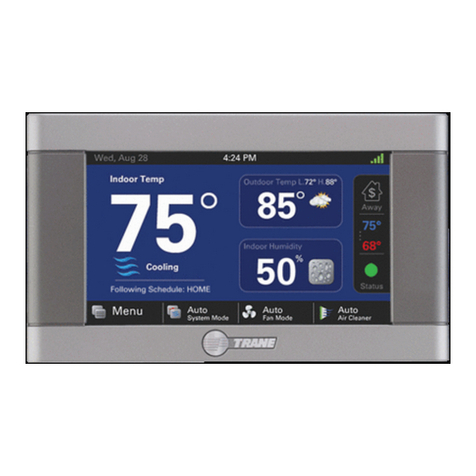
Trane
Trane ComfortLink II XL 850 user guide
Viconics
Viconics VT76 7 Series installation guide
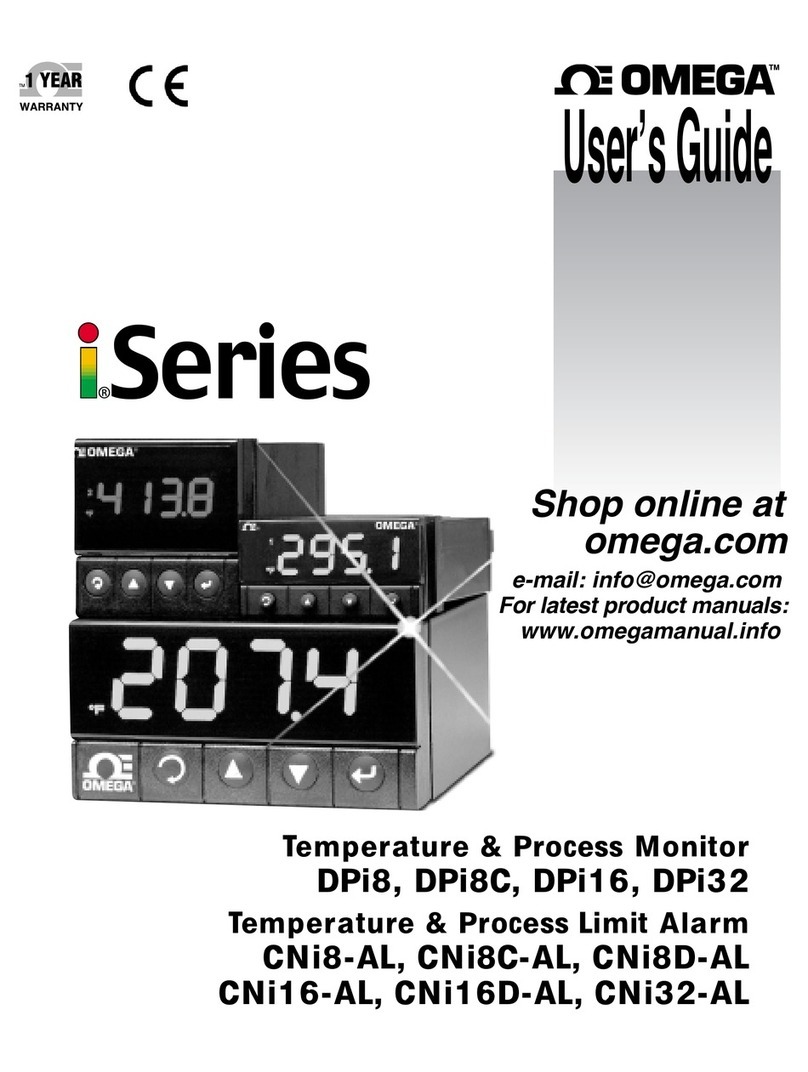
Omega
Omega i Series user guide
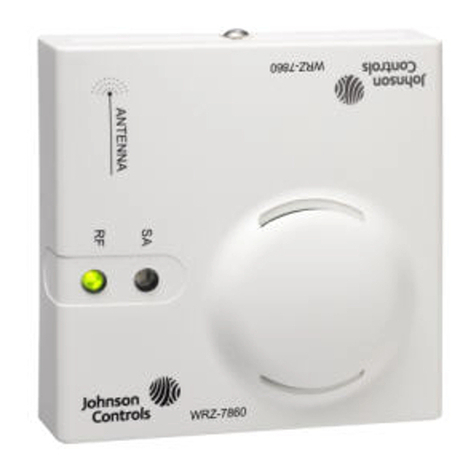
Johnson Controls
Johnson Controls WRZ-7860-0 installation instructions

United Electric Controls
United Electric Controls 100 Series Installation and maintenance instructions
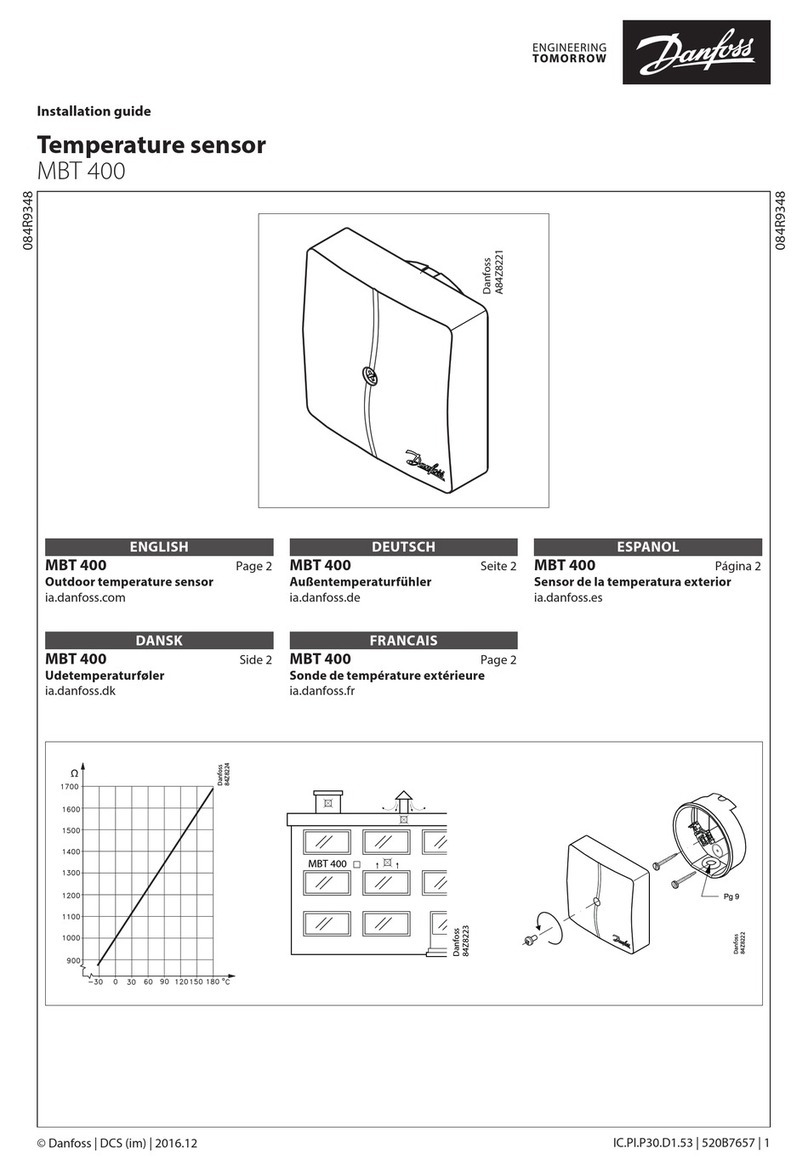
Danfoss
Danfoss MBT 400 installation guide
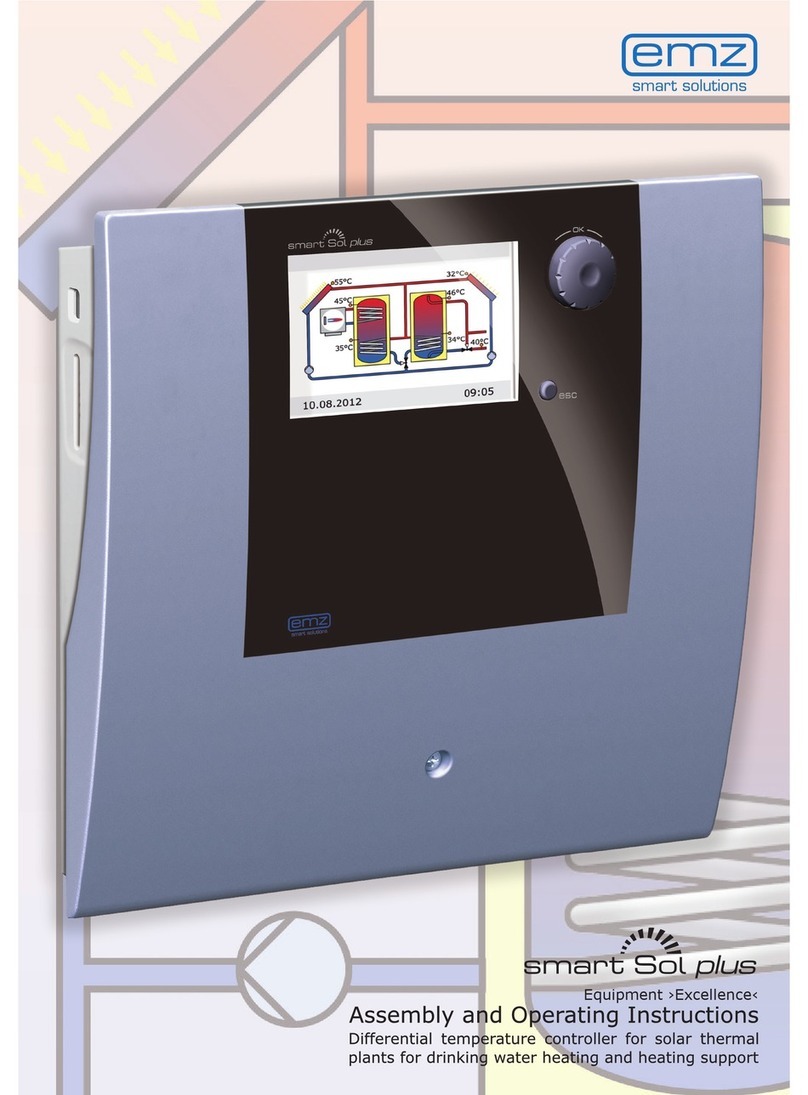
emz
emz smart Sol plus Assembly and operating instructions
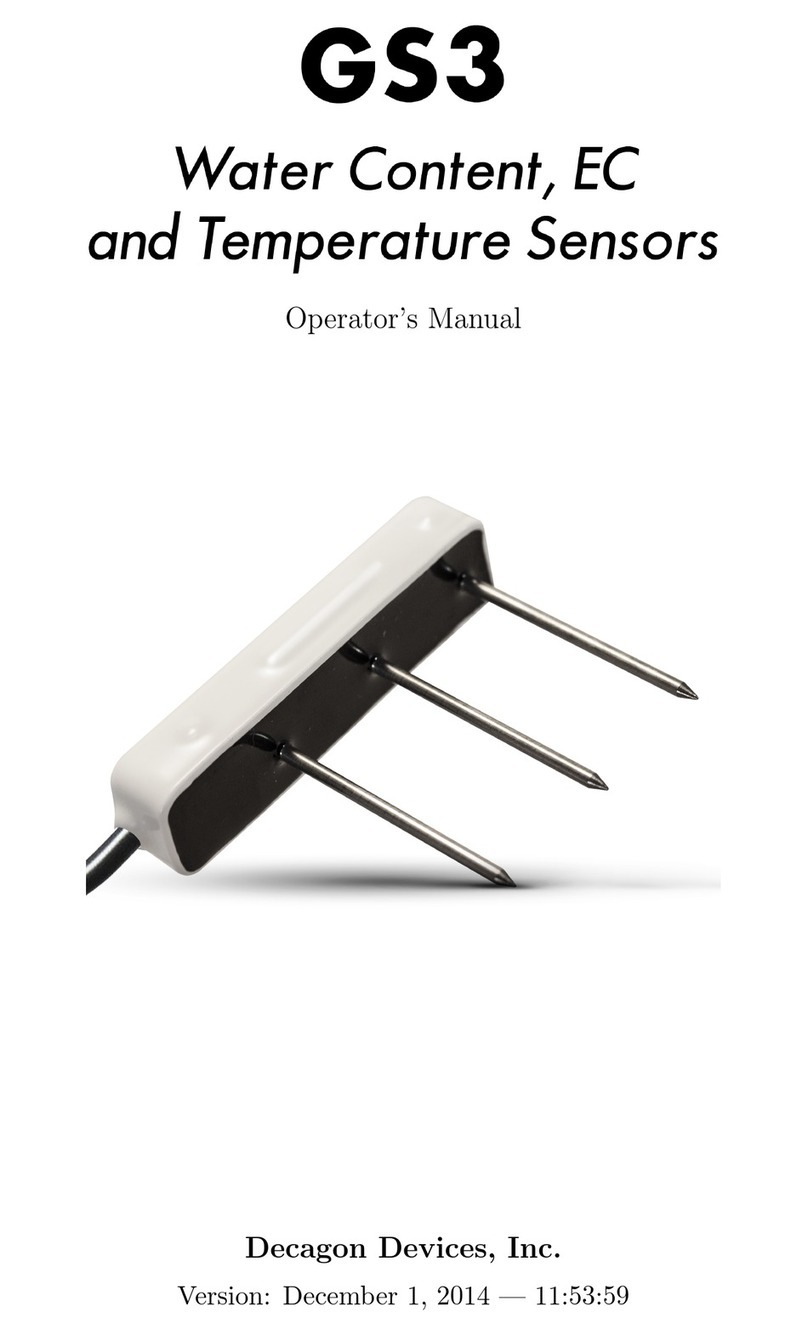
Decagon
Decagon GS3 Operator's manual
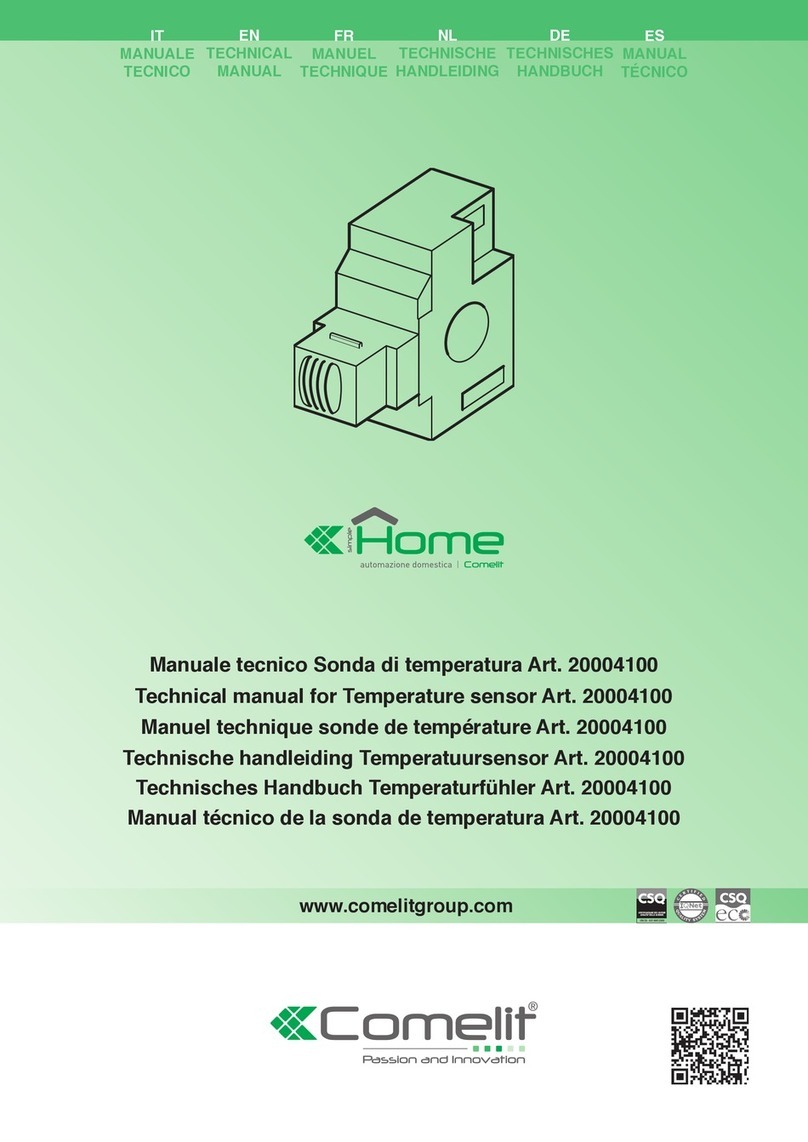
Comelit
Comelit Home 20004100 Technical manual
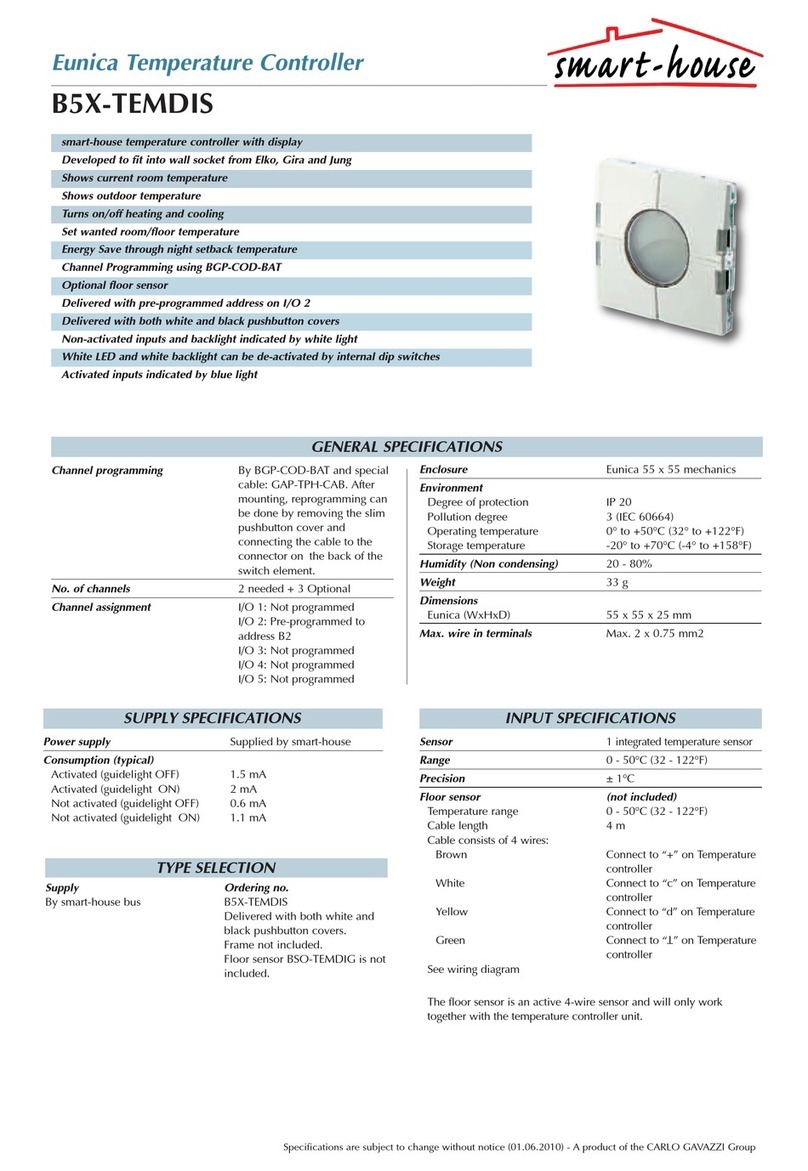
CARLO GAVAZZI
CARLO GAVAZZI Eunica B5X-TEMDIS quick start guide

Omron
Omron E5ZE-8 D1 B-V2 datasheet
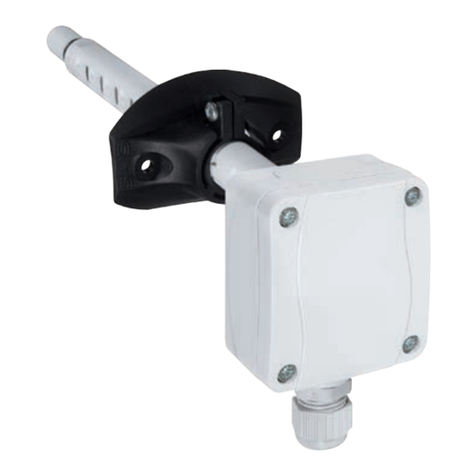
sauter
sauter EGH110F941 Operating Instructions, Mounting & Installation
